
Explore the must-visit zoos, aquariums, and botanical gardens in Tokyo and its surroundings, complete with travel tips and more, curated by LIVE JAPAN, a premier travel website for visitors to Japan. This ranking is based on the most popular pages viewed by international travelers in each category.
Discover amazing spots like Edogawa Natural Zoo, Ueno Zoo (Ueno Zoological Gardens), Enoshima Aquarium, and other fantastic destinations. Make sure to add these attractions to your itinerary during your visit to Tokyo and its surroundings!
1. Edogawa Natural Zoo
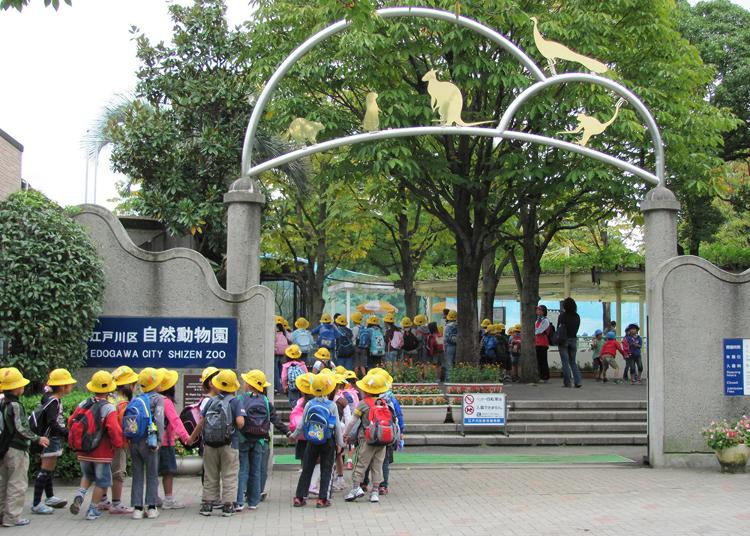
The Edogawa Natural Zoo, located within Gyosen Park in Edogawa Ward, Tokyo, is a delightful, admission-free zoo perfect for a casual visit. It features a variety of small animals, such as red pandas, giant anteaters, black-tailed prairie dogs, Bennett's red-necked wallabies, Humboldt penguins, and otarias. One of the most popular attractions is the petting zoo, where visitors can hold rabbits and guinea pigs and interact with goats and sheep. The petting sessions are open twice daily from 10:00 a.m. to 11:45 a.m. and 1:15 p.m. to 3:00 p.m. The aquatic zone displays freshwater and brackish water fish, along with other creatures native to the Edogawa Ward. The zoo is a charming spot for a relaxing and interactive experience with animals.
-

-
Address
The bank ship park, 3-2-1, Kitakasai, Edogawa-ku, Tokyo, 134-0081
View Map -
Nearest Station
Nishi-Kasai Station (Tokyo Metro Tozai Line)
15 minutes on foot
- Phone Number 03-3680-0777
-
Address
The bank ship park, 3-2-1, Kitakasai, Edogawa-ku, Tokyo, 134-0081
2. Ueno Zoo (Ueno Zoological Gardens)
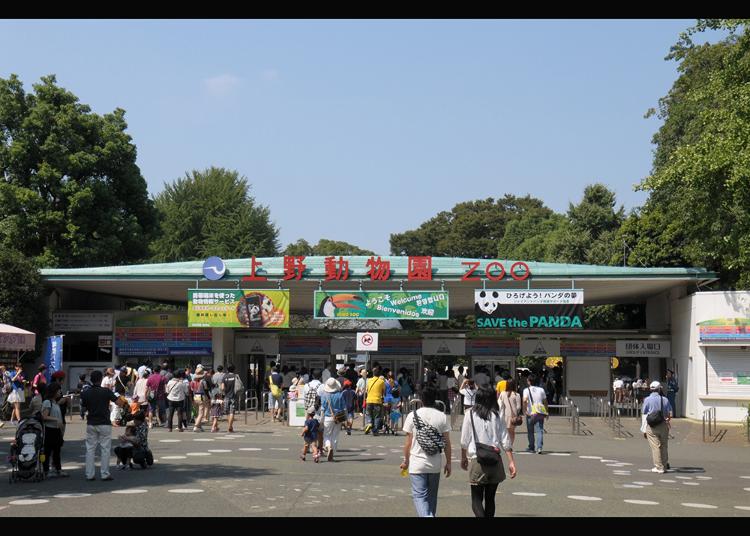
Opened in 1882, Ueno Zoo was the first zoo to be established in Japan. Home to around 400 different species and 3,000 animals, the zoo is divided into two main areas. In the East Garden, you can see popular attractions like the giant pandas and swimming polar bears. The West Garden features smaller animals, including the rarely-seen aye-aye, and offers interactive experiences with guinea pigs and rabbits. At Shinobazu Pond in the western part of the zoo, you can observe various bird species and get up close to the zoo's diverse wildlife. The zoo also offers guided tours led by expert staff, providing insights into animal diets and gender differences.
-

-
Address
9-83, Uenokouen, Taitou-ku, Tokyo, 110-8711
View Map -
Nearest Station
Ueno Station (Hokkaido Shinkansen Line / Tohoku Shinkansen Line / Akita Shinkansen Line / Yamagata Shinkansen Line / Joetsu Shinkansen Line / Hokuriku Shinkansen Line / JR Keihin-Tohoku Line / JR Yamanote Line / JR Tohoku Main Line / JR Utsunomiya Line / JR Takasaki Line / JR Joban Line / JR Ueno Tokyo Line / Tokyo Metro Ginza Line / Tokyo Metro Hibiya Line)
5 minutes on foot
- Phone Number 03-3828-5171
-
Address
9-83, Uenokouen, Taitou-ku, Tokyo, 110-8711
3. Enoshima Aquarium
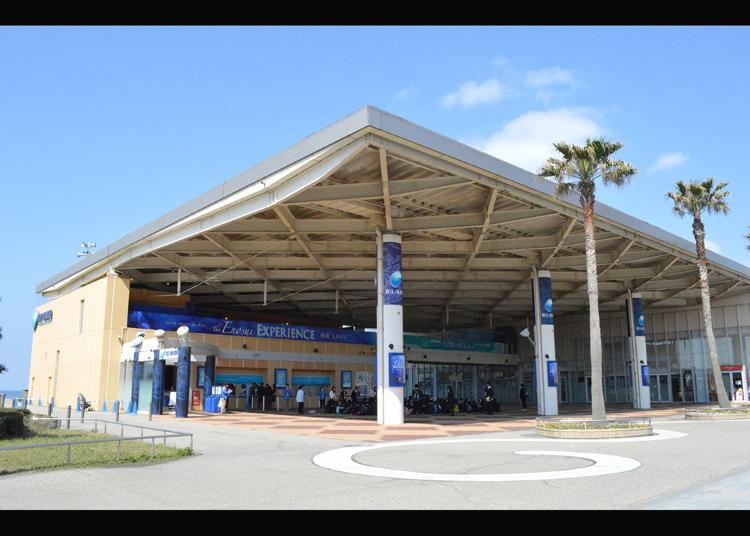
Facing the Sagami Bay, Enoshima Aquarium boasts a stunning location with views of the World Heritage site Mt. Fuji and the scenic Enoshima. Inside the enormous aquarium, which replicates the nearby Sagami Bay, you can observe 90 different types of fish, totaling 20,000, including beautiful Japanese sardines swimming in groups. The aquarium features two diving shows in the water tank, providing visitors with an up-close look at the marine life.
A must-see is the two exhibitions about jellyfish, which focus on “healing” and “learning.” These exhibitions, developed over 60 years of breeding and study, introduce the fascinating world of jellyfish, their ecology, and specially curated displays in a submarine-themed hall. The "healing" area offers a unique jellyfish show that explores their serene and captivating nature.
Other highlights include the turtles’ beach, a sandy area for turtle egg-laying where you can watch them swim leisurely, as well as exhibits of adorable penguins and seals.
-

-
Address
2-19-1, Katasekaigan, Fujisawa-shi, Kanagawa, 251-0035
View Map -
Nearest Station
Katase-Enoshima Station (Odakyu Enoshima Line)
3 minutes on foot
- Phone Number 0466-29-9960
-
Address
2-19-1, Katasekaigan, Fujisawa-shi, Kanagawa, 251-0035
4. Fuji Safari Park

Fuji Safari Park is a unique zoo where animals roam freely within the park's expansive grounds. The park is divided into two main zones: the Safari Zone and the Contact Zone. The Safari Zone is further split into seven sections: Bear, Lion, Tiger, Cheetah, Elephant, General Herbivore, and Mountain Herbivore Zones. Animals from around the world are bred in environments that closely mimic their natural habitats. Visitors can observe these animals from the Jungle Bus, which offers guided tours and allows for close encounters with fierce animals like bears and lions through its wire mesh enclosures.
The Contact Zone is divided into the Petting Farm and the Animal Village, where visitors, especially children, can directly interact with, play with, and feed both rare and common animals. Indoor facilities such as the Dog House, Cat House, and Rabbit House make it convenient to visit even on rainy days. Throughout the park, you can enjoy stunning views of the World Heritage Site, Mt. Fuji.
-

-
Address
Suyama, Susono-shi, Shizuoka character Fujiwara 2255-27, 410-1231
View Map -
Nearest Station
Gotemba Station (JR Gotemba Line)
35 minutes by bus
- Phone Number 055-998-1311
-
Address
Suyama, Susono-shi, Shizuoka character Fujiwara 2255-27, 410-1231
5. Sunshine Aquarium
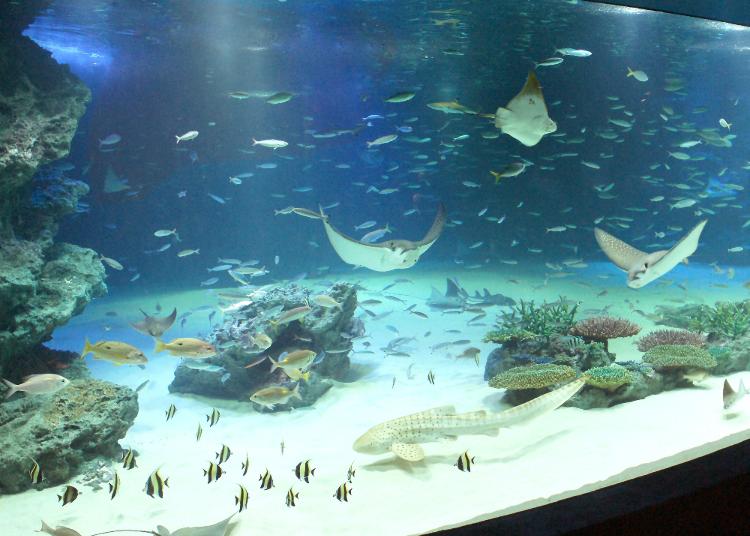
Designed with the concept of an "Oasis in the Sky," the Sunshine Aquarium is an extraordinary metropolitan aquarium located in a high-rise building, offering visitors a unique experience of joy, comfort, peacefulness, and relaxation. Its convenient location is another attractive feature, being just a 5-minute walk from Higashi-Ikebukuro Station on the Tokyo Metro Yurakucho Line and a 10-minute walk from Ikebukuro Station on several other lines.
The aquarium provides an entertaining space where visitors can observe various marine creatures and enjoy shows such as a seal show, underwater performance show, and feeding-time shows for seals, pelicans, and penguins. Additionally, the aquarium features shops selling exclusive items and a stylish cafe that evokes the ambiance of a resort beach. This makes the Sunshine Aquarium a perfect destination for people of all ages, from children to the elderly.
-

-
Address
World Import Mart Building/Rooftop, 3-1 Higashiikebukuro, Toshima-ku, Tokyo, 170-8630
View Map -
Nearest Station
Ikebukuro Station (JR Shonan Shinjuku Line / JR Yamanote Line / JR Saikyo Line / Tokyo Metro Marunouchi Line / Tokyo Metro Yurakucho Line / Tokyo Metro Fukutoshin Line / Seibu Ikebukuro Line / Tobu Tojo Line)
10 minutes on foot
- Phone Number 03-3989-3466
-
Address
World Import Mart Building/Rooftop, 3-1 Higashiikebukuro, Toshima-ku, Tokyo, 170-8630
6. Sumida Aquarium
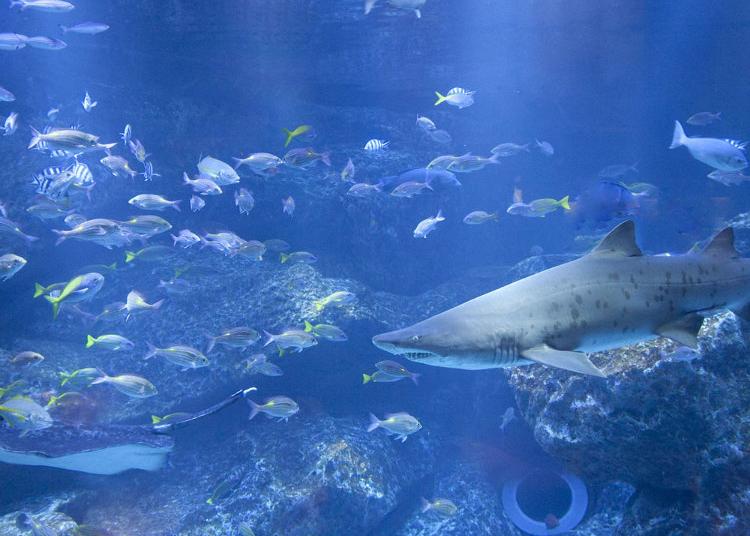
Sumida Aquarium, located on the 5th and 6th floors of the Tokyo Skytree Town building, is a vibrant urban aquarium divided into eight distinct zones. Some of the popular attractions include Tokyo Dai-suiso (the Tokyo Main Aquarium), which represents the sea surrounding the Ogasawara Islands, a World Natural Heritage site. One of Japan's largest tanks, resembling an indoor swimming pool, allows visitors to observe penguins and fur seals up close. The Jellyfish Kaleidoscope Tunnel, with its 5,000 mirrors mounted along a 50-meter sloped wall and ceiling, creates a magical space illuminated with blue light, highlighting the beauty of jellyfish.
In the Edo-rium, opened in April 2015, visitors can enjoy creative exhibitions themed around iki (stylish) and miyabi (elegance). This zone features a collaboration of Edo-era marine life, ukiyo-e (color prints of everyday life in the Edo Period) by Hokusai Katsushika, and exhibitions of goldfish that were popular during that time. With numerous entertaining programs and workshops available, there's always something to engage visitors of all ages.
-

-
Address
Tokyo Skytree town Solamachi 5F, 6F, 1-1-2, Oshiage, Sumida-ku, Tokyo, 131-0045
View Map -
Nearest Station
Tokyo Skytree Station (Tobu Isesaki Line (Tobu Skytree Line))
1 minute on foot
- Phone Number 03-5619-1821
-
Address
Tokyo Skytree town Solamachi 5F, 6F, 1-1-2, Oshiage, Sumida-ku, Tokyo, 131-0045
7. Nogeyama Zoo
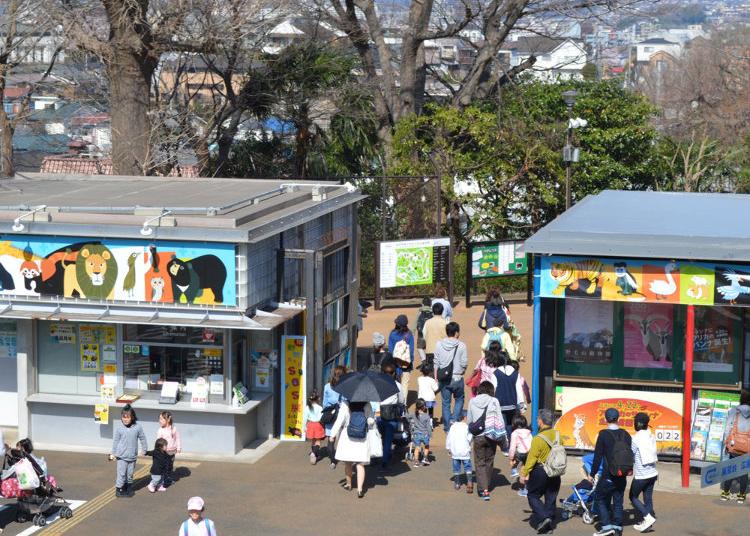
Nogeyama Zoo, located in Nogeyama Park (Nogeyama Comprehensive Park) with a view of Minato Mirai, is home to over 90 different species. The zoo's design allows guests to see animals up close, enhancing the experience. In Nakayoshi Square, visitors can pet small animals like guinea pigs and mice, though groups of more than 30 people need to make a reservation in advance. Daily feeding times, accompanied by zookeeper explanations, offer additional educational opportunities.
The zoo also features a free resting area and a cafe that serves light meals, making it a comfortable spot for visitors. With nearby facilities like the Yokohama City Central Library, Nogeyama Zoo is an ideal stop during a leisurely stroll. Admission is free, and the zoo is just a 15-minute walk from JR Negishi Line or Yokohama Municipal Subway Sakuragicho Station.
-

-
Address
63-10, Oimatsucho, Nishi-ku, Yokohama-shi, Kanagawa, 220-0032
View Map -
Nearest Station
Sakuragicho Station (JR Negishi Line / Line 3 (Yokohama Blue Line))
15 minutes on foot
- Phone Number 045-231-1307
-
Address
63-10, Oimatsucho, Nishi-ku, Yokohama-shi, Kanagawa, 220-0032
8. Hakone-en Aquarium
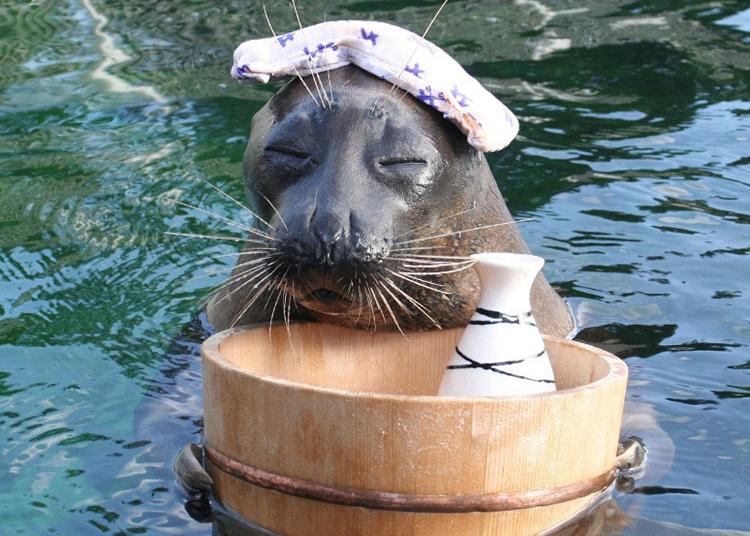
Hakone-en Aquarium is a fascinating attraction featuring the Baikal Seal Plaza, the Seawater Pavilion, and the Freshwater Pavilion, and it houses a total of 32,000 creatures across 450 species. At the Baikal Seal Plaza, visitors can observe the rare freshwater Baikal seals, native to Lake Baikal in Russia, from a close vantage point on the observation deck. The seals also perform unique and popular shows that showcase their distinct personalities.
In the center of the Sea Pavilion, there's a large, open-air water tank that stands 7 meters high, offering a view of various lively saltwater fish swimming within. During the water show, divers feed the fish, providing an exciting spectacle. The aquarium also features rare and colorful fish from the Amazon River, adding to the diverse marine life on display.
-

-
Address
139, Motohakone, Hakone-machi, Ashigarashimo-gun, Kanagawa, 250-0522
View Map -
Nearest Station
Odawara Station (Tokaido Shinkansen Line / JR Tokaido Main Line / JR Shonan Shinjuku Line / JR Ueno Tokyo Line / Odakyu Odawara Line / Hakone Tozan Railway / Izuhakone Railway Daiyuzan Line)
- Phone Number 0460-83-1151
-
Address
139, Motohakone, Hakone-machi, Ashigarashimo-gun, Kanagawa, 250-0522
9. Zoorasia Yokohama
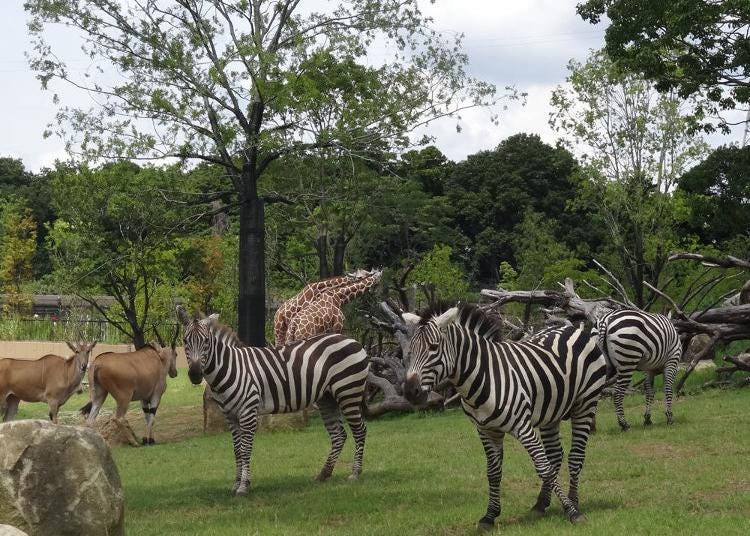
The name Zoorasia is a blend of “zoological park” and “Eurasia,” evoking the imagery of vast, natural landscapes. True to its name, Zoorasia is one of the largest zoos in Japan, housing around 640 animals from 110 species worldwide. The zoo is divided into eight zones based on climate and region, where animals are exhibited in environments that closely mimic their natural habitats, a method known as Habitat Exhibition. This approach allows visitors to observe not just the animals but also the ecosystems they inhabit.
Visitors can see rare animals such as the Okapi, Indian lion, red-shanked douc, and long-nosed monkey. Zoorasia also offers guided tours to help guests learn about the animals in an engaging way. Binoculars are available for loan, enabling a closer look at distant animals.
-

-
Address
1175-1, Kamishirane-cho, Asahi-ku, Yokohama-shi, Kanagawa, 241-0001
View Map -
Nearest Station
Nakayama Station (JR Yokohama Line / Line 4 (Yokohama Green Line))
15 minutes by bus
- Phone Number 045-959-1000
-
Address
1175-1, Kamishirane-cho, Asahi-ku, Yokohama-shi, Kanagawa, 241-0001
- Area
- Category
*Prices and options mentioned are subject to change.
*Unless stated otherwise, all prices include tax.
Popular Tours & Activitiess
Recommended places for you
-

How to Get Don Quijote's Exclusive 2025-2026 Winter Gift (+Tax-Free Savings)
-
Ad

Complete Guide to Ueno's National Museum of Nature and Science, the Perfect Place to Visit on Rainy Days or With Children
-

Japan’s Shinkansen Is About to Change Travel in an Unexpected Way
by: Guest Contributor
-
Ad

Discover the "Miraculous Forest" in the Heart of Tokyo: The Institute for Nature Study (9 Minutes from JR Meguro Station)
-

Strawberries, Style, and Tokyo’s Coolest Neighborhood: Winter Afternoon Tea in Kichijoji
by: Guest Contributor
-

Jujutsu Kaisen Takes Over JR East With a Wrapped Shinkansen This Winter
by: Guest Contributor
Inspiration for Accommodations
-

Enjoy Mt. Fuji from the Comfort of Your Room! Recommended Ryokan with Mt. Fuji View
-

Stay Near the Cherry Blossoms! Hotels for Cherry Blossom Viewing in Tokyo
-

Family-Friendly Hotels with Free Shuttle to Disneyland: Convenient Access for a Magical Stay
-

Top Ranked Hakone Hotels with Mt. Fuji View: Enjoy Stunning Scenery from Your Private Space
-

Convenient Tokyo Hotels with Airport Shuttle: Ideal for Families and Heavy Luggage
-

Stunning Tokyo Tower View Hotels: Enjoy Spectacular Scenery from Your Private Space
-

Convenient Asakusa Hotels with Kitchens: Ideal for Extended Family Visits
-

Experience Luxury: Hakone's 10 Best Five-Star Accommodations
-

Enjoy Mt. Fuji Autumn Leaves! Top Hotels Near the Popular Autumn Leaves Corridor
-

Experience Hakone Fall Foliage from Your Room with Stunning Views
-

Spending Wonderful Time Alone in Shibuya - Free Cosmetics and a Hundred-Yen Bus!
-

Ultimate Guide to Ueno Zoo: Access, Popular Attractions and Services
-

Numazuko Kaisho in Ueno: Good Quality, All-You-Can-Eat Seafood for Just US$12!?
-

6 Fun Things to Do at Tokyo's World-Famous Tsukiji Outer Market!
-

Not Just Pandas! 5 Unique Animal Goods from the Ueno Zoo Gift Shop!
-

Kichijoji – Explore Tokyo’s Top-Rated Stylish Suburb in Half a Day!
- #best ramen tokyo
- #what to buy in ameyoko
- #what to bring to japan
- #new years in tokyo
- #best izakaya shinjuku
- #things to do tokyo
- #japanese nail trends
- #what to do in odaiba
- #onsen tattoo friendly tokyo
- #daiso
- #best sushi ginza
- #japanese convenience store snacks
- #best yakiniku shibuya
- #japanese fashion culture
- #best japanese soft drinks





















